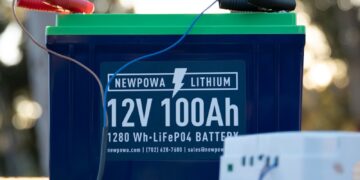The transformation toward a low-carbon economy in the United States is not just technological—it is deeply political, regulatory, and societal. The rise of green steel production and battery energy storage sits at the confluence of environmental sustainability, investor-driven ESG mandates, and a rapidly evolving political climate.
I. ESG Evolution: From Corporate Buzzword to Strategic Imperative
1. ESG’s Rise in American Industry
Environmental, Social, and Governance (ESG) principles have evolved from niche investment criteria into core strategic frameworks for major corporations. For the industrial sector—including steel producers and energy storage companies—ESG is now seen as integral to long-term viability, investor trust, and supply chain resilience.
- Environmental (E): Green steel drastically reduces emissions in a historically carbon-intensive sector. Battery storage enables renewable energy to power entire grids, helping utilities and corporations meet carbon reduction goals.
- Social (S): Job creation in emerging green sectors, equitable labor practices in steel mills, and community-based battery projects are shaping the “just transition.”
- Governance (G): Transparent reporting of carbon footprints, traceability in raw material sourcing (especially in battery supply chains), and proactive policy compliance are now expected by investors and regulators alike.
2. Investor Pressure & Disclosure Mandates
Asset managers like BlackRock and Vanguard, as well as major pension funds, are pushing companies to set and meet ESG targets. SEC rules proposed in 2022 and expected to be finalized in 2025 will likely require public companies to disclose:
- Scope 1, 2, and sometimes Scope 3 emissions;
- Climate-related financial risks;
- Sustainability strategy integration into long-term planning.
Failure to comply could mean regulatory penalties, shareholder activism, or capital flight.
II. Political Shifts: The Green Divide and Bipartisan Crossroads
1. Federal Policy: A Tale of Two Agendas
The political climate in the U.S. remains divided along partisan lines when it comes to clean energy and climate policy.
- Democratic leadership (e.g., Biden Administration) supports green industrial policy through the Inflation Reduction Act, offering tax credits, subsidies, and federal grants for decarbonization technologies, hydrogen, EVs, and battery storage.
- Republican leadership, especially in energy-rich states like Texas, often pushes back against federal mandates, favoring fossil fuel independence and market-led approaches. However, many red states still benefit from the IRA’s incentives and host large-scale clean energy projects, creating political paradoxes.
2. State-Level Innovation and Opposition
States like California, New York, and Massachusetts are pioneering aggressive clean energy mandates and green industrial policies. In contrast, states such as Texas and West Virginia have taken legal action against federal ESG regulations or fossil fuel divestment campaigns.
Yet the political landscape is not black-and-white:
- Texas is home to the largest pipeline of utility-scale battery storage and is expanding solar faster than any other state—even as its legislature pushes anti-ESG bills.
- Rust Belt states like Ohio and Pennsylvania are seeing a resurgence of manufacturing jobs tied to green steel and electric vehicle supply chains, creating new bipartisan support for low-carbon industrial policy.
III. Sustainability Integration in Green Steel and Battery Storage
1. Green Steel’s Role in Circular Economy
The push for green steel is not merely about reducing emissions. It is a linchpin in the circular economy:
- Use of scrap steel in Electric Arc Furnaces (EAF) reduces the need for virgin ore and mining impacts.
- Emerging processes like hydrogen-based DRI eliminate coal dependency.
- Lifecycle emissions tracking is enabling traceable “green certifications” that major buyers like automakers and real estate developers now demand.
2. Battery Storage’s Impact on Renewable Stability and Energy Justice
Battery storage systems are revolutionizing grid dynamics and addressing energy equity:
- Peak shaving and load balancing lower electricity costs for consumers and businesses.
- Community energy storage (CES) projects in marginalized areas improve energy access and reduce outage risks during climate disasters.
- Storage enables decentralized, resilient grids—critical in hurricane-prone, wildfire-exposed, or infrastructure-poor regions.
IV. Challenges Ahead: ESG Backlash and the Realpolitik of Green Transitions
1. The Anti-ESG Movement
In 2023 and 2024, several Republican-led states passed laws barring public pension funds from investing based on ESG criteria. Critics argue ESG mandates interfere with free markets or favor certain political ideologies.
This has led to:
- Banks and insurers withdrawing from fossil-heavy states;
- Investor confusion over fiduciary duty vs. sustainability;
- Mixed messaging in corporate boardrooms trying to navigate red-blue divides.
2. Green Industrialism vs. Labor and Trade Tensions
Even green technologies face scrutiny over:
- Labor practices in new steel plants and battery gigafactories (especially around unionization and safety);
- Trade competitiveness as countries like China subsidize EV batteries and green steel, prompting calls for U.S. tariffs and a new “green protectionism.”
3. Material Sourcing and Environmental Justice
As demand for lithium, nickel, and cobalt increases:
- Domestic mining proposals face resistance from Indigenous communities and conservationists.
- ESG frameworks must reconcile green ambitions with ethical sourcing, land use, and community consent.
V. Conclusion: The Crossroads of Policy, Capital, and Innovation
The growth of green steel and battery storage in America reflects not only technological evolution but also deep structural change. These sectors are forcing companies, investors, and policymakers to redefine what it means to be sustainable—and what role the U.S. will play in the global energy transition.
To succeed, a unified effort is needed:
- Policymakers must maintain consistency in incentives and ensure equitable implementation.
- Corporations must go beyond marketing ESG and integrate it into core operations.
- Communities and workers must be meaningfully included in the green transition to avoid the mistakes of past industrial shifts.
The green steel beams and lithium-filled containers being built today are more than infrastructure—they are scaffolds for a new American economy grounded in sustainability, resilience, and inclusive growth.



















